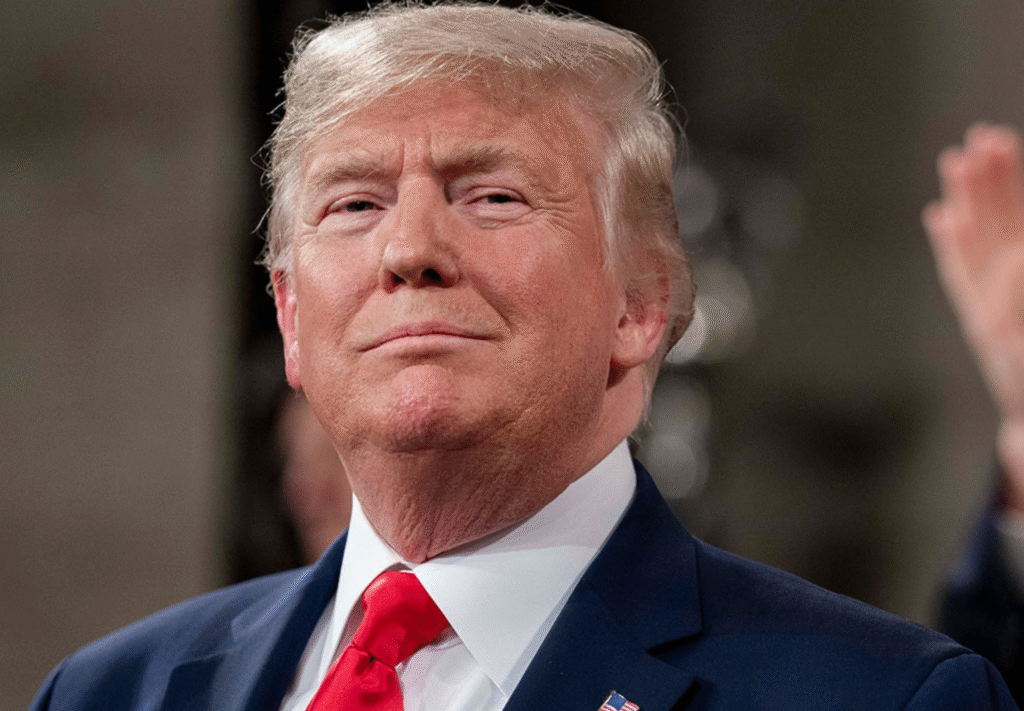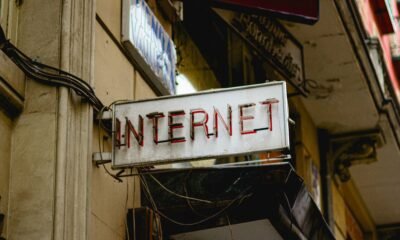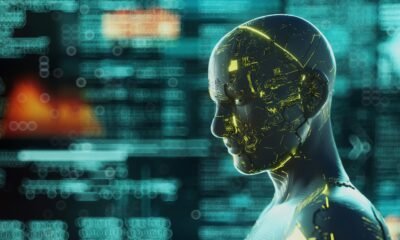News
Are Gen Zers Losing the Art of Friendship? Here’s What Research Says
Recent research and headlines suggest that Generation Z is facing unprecedented challenges in making and maintaining friendships. But is this generation truly “losing the art of friendship,” or are they simply navigating new social realities?
“Making new friends was really tough during the pandemic, so networks across the board were shrinking.”
— Janice McCabe, Associate Professor of Sociology at Dartmouth College
The Pandemic’s Lasting Impact
The COVID-19 pandemic profoundly disrupted the traditional pathways through which young adults form lasting bonds. Studies show that the pandemic not only made it harder for Gen Zers to sustain existing friendships, but also to create new ones, as both school and work — historically hubs for social connection — became remote or inconsistent [Dartmouth College study][BBC Worklife].
A Dartmouth College study tracked Gen Z students over five years and found that only about 25% of their college friendships survived that period, a dramatic drop-off attributed to both the pandemic and shifting social habits [WellWellUSA].

Social Media: More Connected, More Isolated?
Gen Z is the first generation to grow up fully immersed in social media, which has changed the nature of friendship. While platforms like Instagram and TikTok make it easy to amass hundreds of “friends” or followers, many Gen Zers struggle to differentiate between acquaintances and true friends. This can lead to confusion and disappointment when online connections fail to provide real support [Counseling Today].
Online friendships can feel disposable — it’s easy to block someone or simply move on, making it harder to develop the resilience and communication skills needed for deeper, long-term relationships.
Changing Social Structures
Traditional friendship-building environments are also shifting. Older generations were twice as likely to make friends at work compared to those under 30, according to a recent survey. Gen Zers often rely on friends from school or college, but as they enter adulthood, making new friends becomes more challenging [McKinsey].
Apps and online groups have emerged as new spaces for connection, but these can feel daunting or transactional, and don’t always replace the sense of belonging found in real-life communities [BBC Worklife].
Loneliness and Mental Health
The consequences are serious. Eight out of ten Gen Zers reported feeling isolated, more than twice the rate of senior citizens, according to a Cigna Group survey [WellWellUSA]. The U.S. Surgeon General has even declared loneliness an epidemic, warning that social disconnection increases the risk of depression, anxiety, and even premature death.
A New Kind of Friendship Network
Sociologists have identified three main friendship styles among Gen Z:
- Tight-knitters: One densely connected group of friends
- Compartmentalizers: Several small, separate friend groups
- Samplers: Few friends, rarely staying connected
Most Gen Zers fall into the compartmentalizer or sampler categories, which can make it harder to maintain deep, lasting friendships over time [WellWellUSA].
A Glimmer of Hope
Despite these challenges, friendship remains central to Gen Z’s happiness. A recent study found that 76.9% of single Gen Z respondents claimed to have a best friend, significantly higher than the national average [Newsweek].
Gen Z is also more open than previous generations to making friends online and through interest-based communities, suggesting that while the methods are changing, the desire for connection remains strong [BBC Worklife].

Conclusion
Gen Z isn’t losing the art of friendship — they’re reinventing it. The obstacles are real: pandemic fallout, digital overload, and shifting social structures. But the generation’s willingness to seek connection in new ways, and their recognition of friendship’s importance to well-being, may ultimately help them build more resilient and meaningful relationships in a rapidly changing world.

Bolanle Media covers a wide range of topics, including film, technology, and culture. Our team creates easy-to-understand articles and news pieces that keep readers informed about the latest trends and events. If you’re looking for press coverage or want to share your story with a wider audience, we’d love to hear from you! Contact us today to discuss how we can help bring your news to life
Entertainment
How The Grinch Became The Richest Christmas Movie Ever

The Grinch didn’t just steal Christmas—he stole the box office. The 2018 animated film The Grinch turned holiday chaos into serious cash, grossing around $540 million worldwide on a modest $75 million budget, making it the highest‑grossing Christmas movie of all time. That is more than seven times its production cost, which is the kind of holiday return every studio dreams about.

Meanwhile, the 2000 live‑action How the Grinch Stole Christmas with Jim Carrey laid the groundwork for this green empire. That version pulled in roughly $345–347 million worldwide on a $123 million budget, turning a prickly Dr. Seuss villain into a perennial box‑office player and a meme‑ready holiday icon. The nostalgia around Carrey’s performance is a big part of why audiences were ready to show up again almost two decades later.
The Money Behind The Mayhem
The 2018 film did not just earn big—it earned smart.
It opened to more than $$67 million domestically in its first weekend and kept playing steadily through November and December, ultimately pulling in about $272 million in the U.S. and roughly $267 million internationally.
Then there is the profit. Trade estimates peg the film’s net profit in the neighborhood of nearly $185 million once theatrical revenue, home entertainment, and TV/streaming deals are baked in. That is before counting years of reruns, licensing, and holiday programming packages—every December, the Grinch gets another quiet deposit while everyone else is wrapping gifts.
Grinch vs. Everyone: Who’s Really On Top?
Here is how the Grinch stacks up against other Christmas heavyweights by worldwide box office:
| Film | Year | Worldwide Gross (approx.) | Notes |
|---|---|---|---|
| The Grinch (animated) | 2018 | $510–540 million | Highest‑grossing Christmas movie ever |
| Home Alone | 1990 | ~$476 million | Longtime champ, now second place |
| How the Grinch Stole Christmas (live‑action) | 2000 | ~$345–347 million | Built the modern Grinch brand |
| The Polar Express | 2004 | ~$315 million | Holiday staple, trails both Grinch movies |
Different sources list slightly different totals, but they all agree: the 2018 Grinch sits at the top of the Christmas money mountain.
Why The Grinch Keeps Printing Money
The secret sauce is that the Grinch is more than a movie—he is a business model. Every version of this character hits a different emotional lane: Jim Carrey’s 2000 Grinch is pure chaotic energy and quotable nostalgia, while the 2018 Grinch is softer, cuter, and perfectly engineered for modern families and global audiences. Together, they keep the character relevant across generations, which is exactly what studios want from an evergreen holiday IP.
On top of box office and home sales, the character feeds theme‑park attractions, holiday events, branded specials, apparel, toys, and seasonal marketing campaigns. The Grinch went from “I hate Christmas” to “I own Christmas,” quietly turning grouchiness into one of the most profitable holiday brands on the planet.
News
US May Completely Cut Income Tax Due to Tariff Revenue

President Donald Trump says the United States might one day get rid of federal income tax because of money the government collects from tariffs on imported goods. Tariffs are extra taxes the U.S. puts on products that come from other countries.

What Trump Is Saying
Trump has said that tariff money could become so large that it might allow the government to cut income taxes “almost completely.” He has also talked about possibly phasing out income tax over the next few years if tariff money keeps going up.
How Taxes Work Now
Right now, the federal government gets much more money from income taxes than from tariffs. Income taxes bring in trillions of dollars each year, while tariffs bring in only a small part of that total. Because of this gap, experts say tariffs would need to grow by many times to replace income tax money.
Questions From Experts
Many economists and tax experts doubt that tariffs alone could pay for the whole federal budget. They warn that very high tariffs could make many imported goods more expensive for shoppers in the United States. This could hit lower- and middle‑income families hardest, because they spend a big share of their money on everyday items.
What Congress Must Do
The president can change some tariffs, but only Congress can change or end the federal income tax. That means any real plan to remove income tax would need new laws passed by both the House of Representatives and the Senate. So far, there is no detailed law or full budget plan on this idea.

What It Means Right Now
For now, Trump’s comments are a proposal, not a change in the law. People and businesses still have to pay federal income tax under the current rules. The debate over using tariffs instead of income taxes is likely to continue among lawmakers, experts, and voters.
News
Mexico Bans Dophin Shows Nationwide

Mexico has approved a nationwide ban on dolphin shows and the use of captive marine mammals in entertainment, making it one of the strongest marine animal protection laws in the world. The reform requires dolphinariums and marine parks across the country to phase out performances, breeding, and swim‑with‑dolphin attractions and to relocate hundreds of dolphins to seaside sanctuaries or sea pens under strict welfare rules.

What the new law does
Mexico’s Congress unanimously reformed the General Wildlife Law to prohibit the use of dolphins and other marine mammals in shows, therapy, tourist attractions, and any activity not directly tied to conservation or strictly regulated scientific research. The text also bans captive breeding for entertainment or tourism, closing a legal loophole that had allowed facilities to replenish and expand their shows.
The ban covers all permanent and traveling venues, ending dolphin performances, orca and sea‑lion shows, and commercial swim‑with‑dolphin programs nationwide. New dolphinariums are forbidden, and “extractive exploitation” of marine mammals is only allowed in limited, non‑commercial conservation or rescue scenarios.
What happens to captive dolphins
Mexico holds an estimated 30 dolphinariums and roughly 350 captive dolphins, making it one of the world’s major markets for dolphin entertainment. Under the reform, these animals cannot be dumped, sold back into the entertainment trade, or killed; instead, they must be transferred to sea pens or seaside sanctuaries and maintained under higher welfare standards for the rest of their lives.
Authorities have up to a year to finalize implementing regulations and up to about 18 months to complete relocation from concrete tanks to more natural marine environments, according to groups monitoring the process. Facilities that fail to comply can face heavy fines in the millions of pesos, along with permit suspensions or closures.
Why “Mincho’s Law” matters
The reform is widely referred to by activists as “Mincho’s Law,” named after a dolphin who was severely injured after crashing onto a concrete surface during a show at a resort in the Riviera Maya. Video of the incident and subsequent reports of other dolphin deaths in the same facility ignited public anger, prompted inspections, and pushed lawmakers to finally act on stalled protections.
Animal‑welfare organizations argue that the law recognizes that keeping highly intelligent, wide‑ranging marine mammals in concrete tanks for tricks and tourist selfies is inherently cruel. They also frame the Mexican decision as part of a global shift away from captive marine mammal entertainment, alongside similar moves in countries such as Canada.

Impact on tourism and industry
The ban will directly affect popular cruise‑ship excursions and resort‑based attractions built around dolphin swims and shows, especially in coastal tourism hubs like Quintana Roo and Baja California Sur. Operators that previously relied on marine mammal performances will have to reinvent their business models, pivot to non‑animal attractions, or shut down entirely.
Tourism and animal‑rights groups expect the move to boost Mexico’s reputation as an ethical destination, even if there is short‑term disruption for businesses tied to the old model. Travel outlets are already advising visitors that dolphin shows and direct‑contact experiences are being phased out and urging them to seek out responsible wildlife viewing instead, such as observing dolphins in the wild.
What this means for animal welfare
For advocates, the law is being celebrated as a historic win that moves more than 350 dolphins out of purely commercial entertainment and toward more natural sea‑based sanctuaries. It also sets a high bar by combining an end to shows, a ban on captive breeding, relocation out of concrete tanks, and strong enforcement mechanisms in a single national framework.
Campaigners now see Mexico as a potential model for other tourist‑heavy countries that still sell dolphin and marine mammal entertainment. They are pushing for transparent timelines, funding, and oversight to ensure the law does not stay symbolic but delivers real, measurable improvements in the lives of the animals affected.

 Entertainment5 days ago
Entertainment5 days agoWicked Sequel Disappoints Fans: Audience Verdict on For Good

 Entertainment3 weeks ago
Entertainment3 weeks agoAfter Party: Festival Winner for Best Romantic Short

 News3 weeks ago
News3 weeks agoCamp Wackapoo – Rise of Glog Takes Center Stage

 News2 weeks ago
News2 weeks agoYolanda Adams Questions Traditional Views on God’s Gender, Audience Reacts

 Entertainment3 weeks ago
Entertainment3 weeks agoFrancisco Ramos Takes Top Mockumentary Award at Houston Comedy Film Festival

 Politics3 weeks ago
Politics3 weeks agoTrump’s $2,000 Tariff Dividend Plan: Who Gets Paid?

 Politics4 weeks ago
Politics4 weeks agoMamdani’s Victory Triggers Nationwide Concern Over New York’s Future

 Film Production3 weeks ago
Film Production3 weeks agoWhy China’s 2-Minute Micro Dramas Are Poised To Take Over The U.S.








































